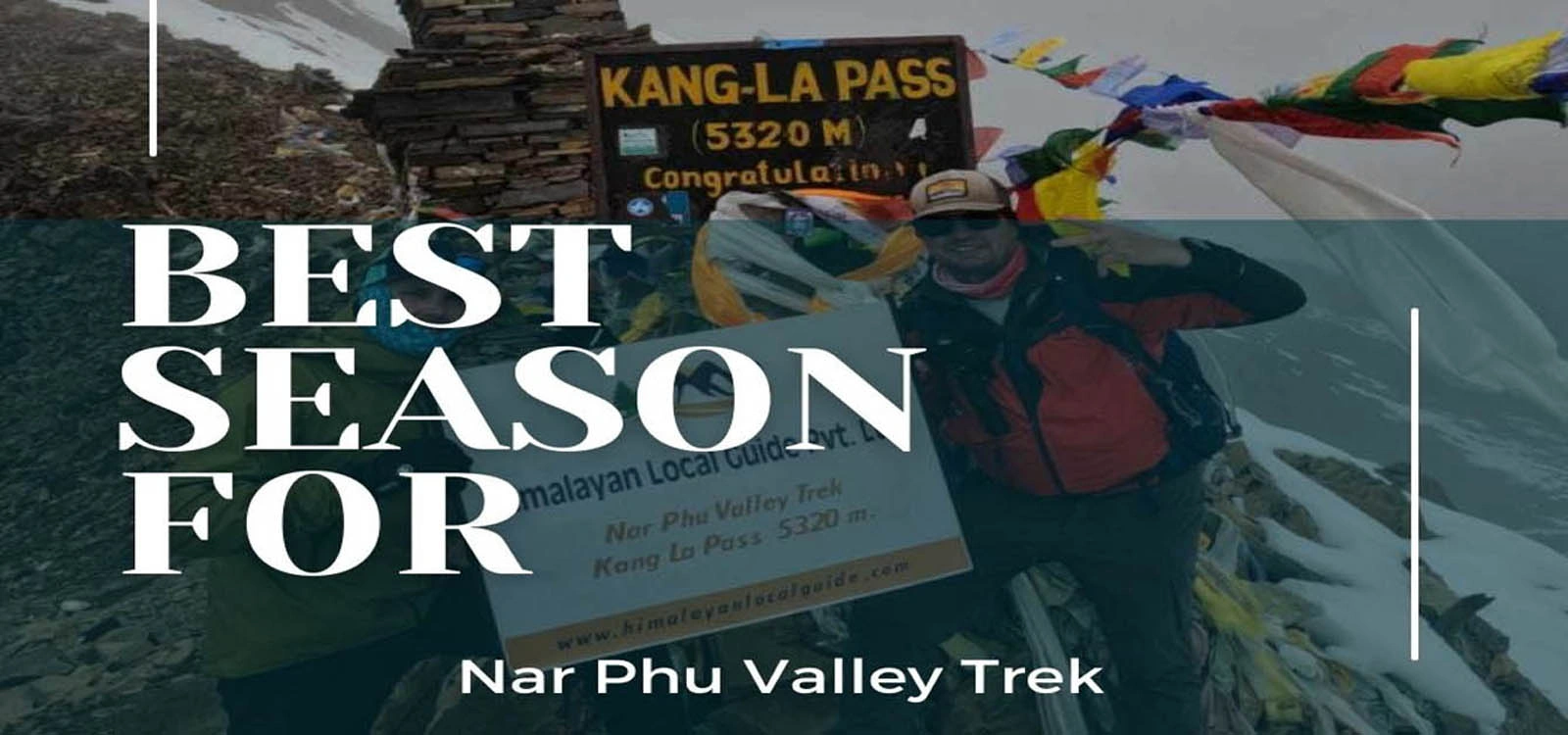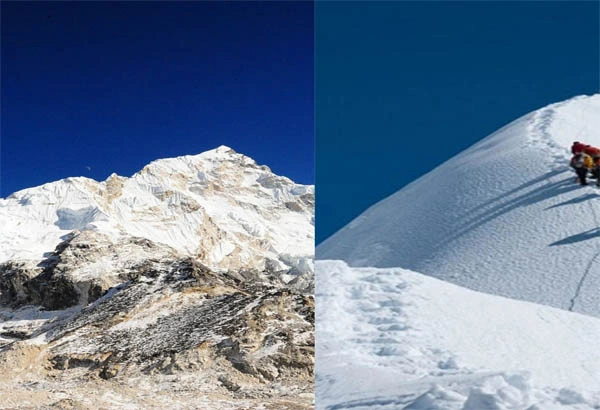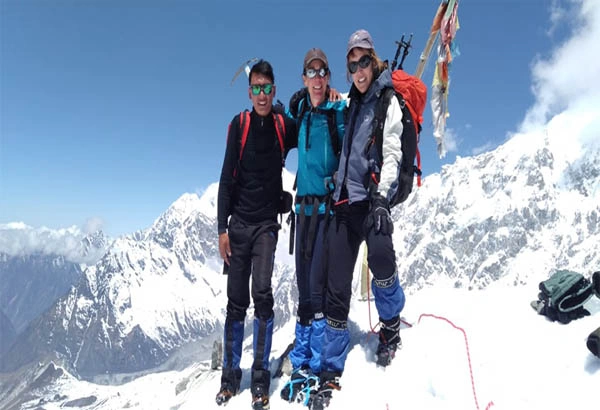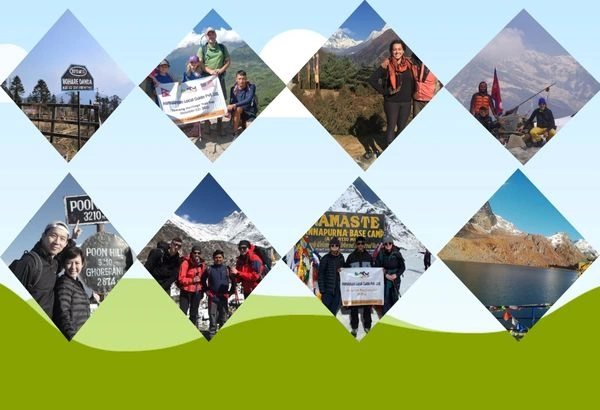Nar Phu Valley trek Details information:
The Nar Phu Valley trek was opened for tourism in 2003. It can be ideal to go through isolated valleys and rocky terrain to reach the Nar Phu Valley, along with antique monasteries in the remote area of the Annapurna regions. You can also dip yourself in the rich Tibetan and Gurung culture.
During the trek, you can also see Pisang Peak, Annapurna II, Annapurna III, Tilicho Peak, and Lamjung Himal. However, the duchess and delight of the Nar and Phu Valley trek depends on you choosing the precise season.
Choosing the best season for trekking to Nar Phu Valley is vital. Individually season possesses its beauty and challenges, so picking the best season can ensure your safety, which is the most important.
By option the right season, your trek can be less difficult, as the trekking trails will be in good condition. In the spring season, there are blooming rhododendrons and various flowers. You can choose the best season, and can also bring a quieter trek with fewer crowds. Picking the right season makes the Nar Phu Valley trek more pleasurable and safe.
When is the best season For the Nar Phu Valley trek?
Spring Season:
Spring Season (March to May) is one of the best times for the Nar Phu Valley trek. The weather conditions are mild and stable. It can be clear skies and blooming various flowers including beautiful rhododendrons. The temperature is suitable for trekking. The nearby Himalayas views are fabulous. It is the best time to discover the Nar Phu Valley journey. It's one of the popular times for trekking in the Nepal Himalayas.
Summer season:
The summer Season (June to August) is generally rainy. This season coincides with the monsoon season in Nepal. It might be heavy rain and cloudy. The trekking trails can be muddy and slippery, and views can be hazy. Additionally, there might be a higher risk of landslides in some places. The summer season can be challenging and less pleasurable than the autumn and spring seasons.
Autumn Season:
The autumn (September to November) is one of the best seasons for the Nar Phu Valley trekking. The weather is stable, with blue skies and warm temperatures. However, it might be cold at high elevations.
The trekking trails are in good shape in autumn, making trekkers easier and more enjoyable. Autumn is also best for wildlife spotting many animals during the journey.
Winter Season:
The winter season (December to February) might be demanding while trekking in the Nar Phu Valley. The weather is too cold during this period, especially at high elevations. There is a high chance of encountering snow along the trails. The Snowfalls can block or make some parts of the trekking route challenging to high passes. However, winter can offer a unique and gorgeous trek if you are ready for an adventure winter trek. There are fewer crowds on the way journey.
Preferences:
Preferences play a crucial role in choosing the trekking season. Before or after the summer can prefer trekkers who desire warmer and more exciting landscapes. It has stable weather, blue skies, and enjoyable temperatures this time. Separateness seekers might favor winter treks despite severe weather. People who like lush green landscaping can find the monsoon attractive.
Physical Fitness level requires:
The Nar Phu Valley trek route has several ascending and descending, particularly around Kang La High Pass. It requires a good physical fitness level. Fitting trekkers can complete these demanding adventures. This is true in any season. Nonetheless, fit persons can find the pre-monsoon and post-monsoon times easier. This is because the trekking trails are better.
Fitness level also affects flexibility in risky weather. Those who are fit trekkers with experience can grip the cold and icy winter paths. They could also hold the slippery trails and heavy rains of the summer. New trekkers might prefer the stable and mild seasons. They are less risky before and after the monsoon season. Along with physical fitness level, mental preparation is also a must while going on trekking.
Highlights of Nar Phu Valley Trekking:
- Visit Annapurna's most remote valleys.
- Stunning vistas of Annapurna II, Annapurna III, Gangapurna, Pisang and Tilicho Peak.
- Treks through the diver's landscapes, including dense forests, valleys, and rocky trails.
- Soaking in traditional Tibetan and Gurung Culture in Nar and Phu villages.
- Crossing the high passes Kang La (5,320 meters).
- Explore the Nar Phedi Monastery.
- Discover the Nar and Phu Ghau.
How difficult is the Nar Phu Valley Trek?
The Nar Phu Valley trek is moderate-difficulty level and requires good physical fitness stamina. It is suitable for trekkers who are comfortable with high altitudes and long days of trek. The trek involves walking for several per day. The trekking trails are often in remote and rocky terrain, with uphill and downhill parts.
Trek experience at high elevations is useful. The trekking is challenging as it goes above 5,000 meters. Acclimatizing to avoid altitude sickness is a must. It would be best if you have permits for Nar Phu Valley. It would be good to trek with a local guide or agency, as different Nar Phu Valley trekking packages are available. They must be friendly with the area, which is isolated and has fewer facilities.
The Nar Phu Valley trekking is a demanding trek but rewarding. You can enjoy the trek to the completest by discovering the Nar villages. It's for those seeking a less traveled route in the Annapurna regions. Although many difficulties, you will make memories of a lifetime at the end of your journey.
Nar Phu Valley Trekking Route:
The Nar Phu Valley trek will take you throughout the journey to the remote villages of Nar and Phu Ghau. It lies in the Annapurna area of Nepal. The Na Phu Valley trekking begins from the Koto. It follows the known as the Annapurna circuit trek route. From the Koto Village, trek through the beauty of landscapes, including lush forests and small villages and trekking continues to Meta a small village that serves as the gateway to the Nar Phu valley. Trekkers pass through the Nar Phu Ghau, walking through barley, potato fields, and ancient monasteries.
You reach Phu Ghau, well-known for its unique Tibetan-influenced culture and antique monasteries. The rest day is generally arranged in Phu to travel the village and interrelate with local communities.
After visiting Phu Ghau, trekkers back down through the Nr Phu Valley. You cross the Na Khola and ascend to Nar Village. From the Nar Village. We ascend toward the Kang La Pass, located at the foot of the Pass.
The next day early in the morning, we cross the Kang La Pass (5,320 meters), which offers vistas of the Peaks and Manang regions. The trekking trails go downhill from the High Pass and lead to Nawal, where you can region the Annapurna circuit trekking route.
You can rest there and enjoy with natural environment before catching a jeep back to Besishar. The trekking Itinerary for Nar Phu Valley is for experienced trekkers. You can be looking for an off-the-beaten trail adventure in the Himalayas, after hours of trekking, you can finally get your target and dip yourself in Nature.




